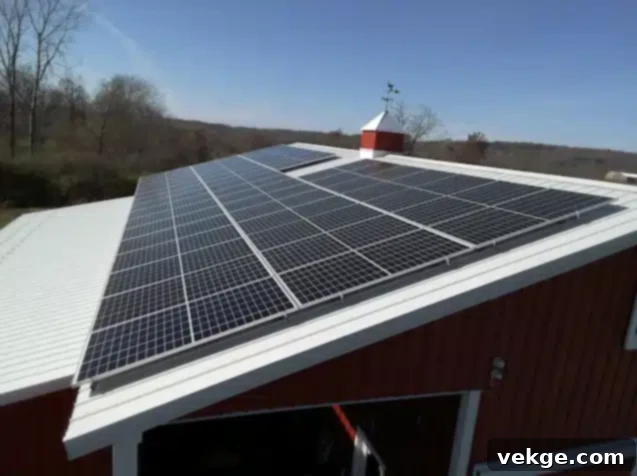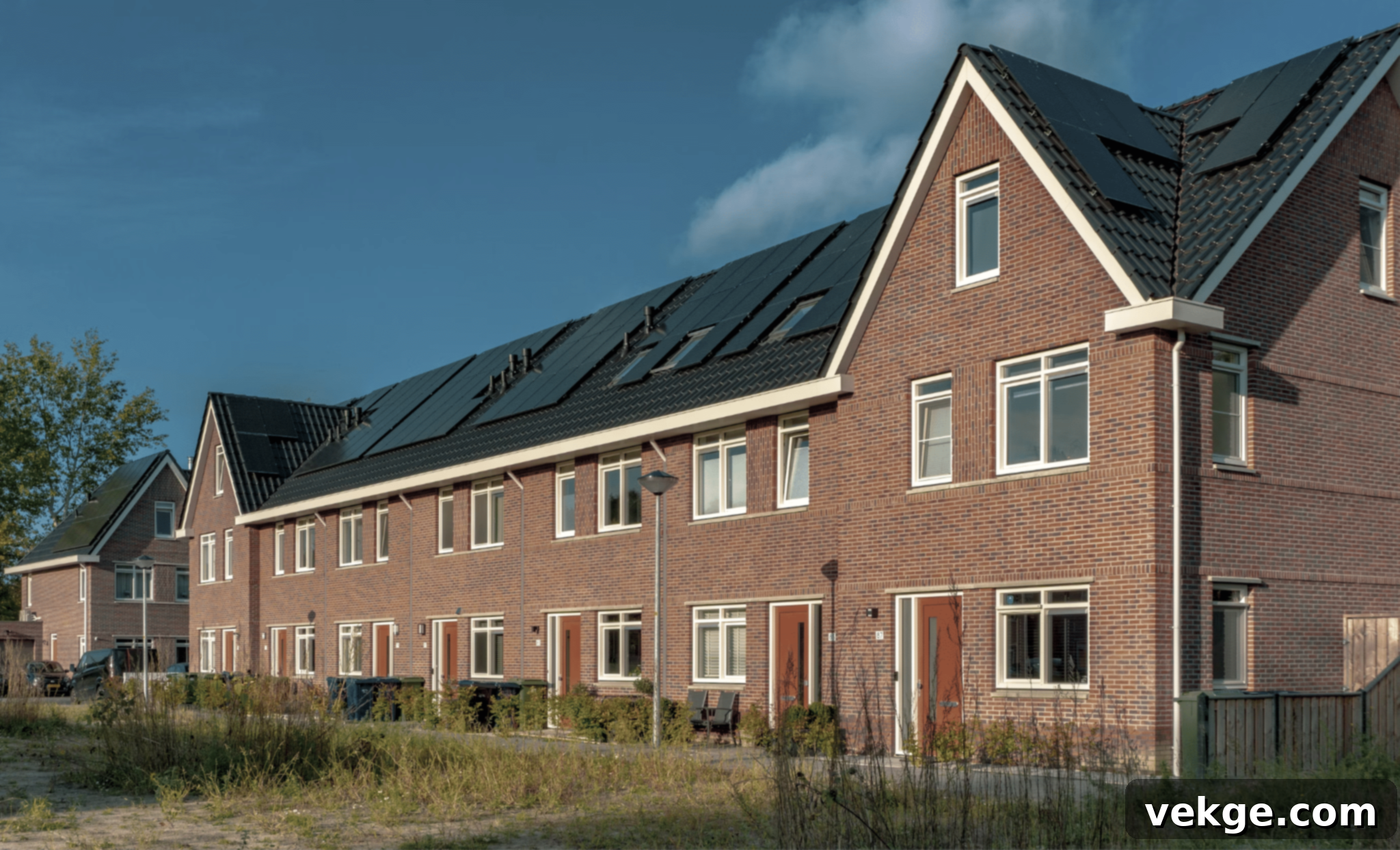Affordable Sustainable Living: Practical Eco-Friendly Home Solutions for Every Budget
Sustainable living, once perceived as an exclusive luxury reserved for the affluent, has undergone a remarkable transformation. Today, eco-friendly home options are no longer out of reach for the average homeowner. Significant advancements in manufacturing processes, the proliferation of government grants, and an increasingly competitive market have converged to make practical sustainability an achievable reality for middle-class budgets across the globe. This paradigm shift means that embracing a greener lifestyle is now both an environmentally responsible choice and a financially astute decision.
The economic landscape of green living has fundamentally changed. We’ve seen a dramatic reduction in upfront investment costs, while the long-term savings continue to escalate. From efficient solar installations that promise to pay for themselves over time, to intelligent smart devices that begin trimming utility bills from the moment they’re activated, sustainability now offers a compelling dual benefit: profound positive environmental impact coupled with tangible financial rewards. It’s a win-win scenario that empowers more households to invest in a future that is both greener and more fiscally secure.
Solar Power: Clean Energy Within Financial Reach
Solar technology has truly democratized, evolving from a high-end home feature into a practical, accessible addition for millions of homeowners. This widespread availability is largely due to several key factors: massive economies of scale in manufacturing, groundbreaking innovations in material science, and streamlined installation efficiencies. These developments have collectively brought this powerful clean energy source within the financial grasp of middle-class households. Moreover, installation times have drastically decreased, minimizing disruption to daily life and encouraging more homeowners to make the transition to solar without significant inconvenience or lengthy waiting periods.
From Premium to Practical: The Evolution of Solar Panels
Traditional photovoltaic (PV) solar panels have experienced impressive price reductions while simultaneously achieving remarkable improvements in both efficiency and durability. Modern panels are engineered to generate more power from a smaller footprint, making them highly viable even for average-sized roofs where space might be a premium. The introduction of modular systems further enhances accessibility, allowing homeowners to begin with a smaller installation and expand their capacity over time. This approach helps to spread out costs, making the initial investment more manageable while immediately starting to offset monthly electricity bills.
Beyond technological advancements, financing options for solar energy have also evolved dramatically. Specialized loans, flexible leasing arrangements, and power purchase agreements (PPAs) have effectively dismantled previously prohibitive upfront costs. Many homeowners discover that their new monthly solar payments are surprisingly lower than their previous utility bills, generating immediate positive cash flow. This makes solar not just an environmental choice but a wise financial investment. For instance, Solar PV can transform homes into self-sufficient energy producers. Furthermore, government incentives, including tax credits and rebates, further reduce the effective cost, making solar an even more attractive proposition for budget-conscious families.
Next-Generation Solar Solutions for Modern Homes

Beyond conventional panels, next-generation renewable solutions like solar shingles are rapidly gaining popularity due to their seamless aesthetic appeal and increasing cost-effectiveness. These innovative shingles, often made from advanced silicon, integrate directly into the roof structure, providing a clean, unobtrusive look that blends with traditional roofing materials. They boast a longer lifespan and can enhance a home’s curb appeal, making them an excellent choice for homeowners who prioritize both sustainability and design.
Another compelling option homeowners can consider is Copper-Indium-Gallium-Selenide (CIGS) technology. CIGS solar cells are known for their flexibility and relatively lower manufacturing costs, making them a perfect choice for those seeking a cost-effective solar energy generation solution. While CIGS panels might be slightly less efficient in terms of raw power output compared to some cutting-edge crystalline silicon panels or newer shingle-sized alternatives, their versatility and affordability make them ideal for various applications, including curved surfaces or portable power solutions. The ongoing research and development in thin-film technologies like CIGS continue to improve their efficiency and expand their market applicability, promising even greater accessibility in the future.
Low-Maintenance Sustainability Upgrades: Harnessing Nature’s Efficiency
Beyond high-tech solar installations, numerous simple, yet impactful, modifications can significantly reduce a home’s environmental footprint without demanding constant attention or complex maintenance. These practical improvements often involve working in harmony with natural processes rather than trying to overpower them, thereby creating systems that are largely self-managing and require minimal human intervention. Such upgrades are not only beneficial for the planet but also offer considerable long-term savings and convenience for homeowners.
Many of these valuable upgrades can be implemented gradually, allowing homeowners to spread out their investments while immediately beginning to enjoy the benefits of reduced resource consumption and lower utility bills. Simple changes, such as investing in rainwater harvesting systems (like water butts for garden use) and cultivating self-sustaining landscapes, can dramatically reduce monthly expenditures on water and provide valuable savings that can then be allocated towards larger future installations, such as a comprehensive solar panel system. These initial steps are often excellent entry points into a more sustainable lifestyle, offering immediate gratification and building momentum for further eco-friendly endeavors.
Water-Wise Home Systems: Conservation Made Easy
Rainwater harvesting has evolved far beyond basic collection barrels. Modern systems are sophisticated, integrated solutions that not only capture rainwater but also filter and redistribute it throughout the home for non-potable uses like toilet flushing, laundry, and garden irrigation. These advanced setups can intelligently direct stored water to gardens during dry periods and efficiently store excess during rainy seasons, all managed through passive infrastructure that requires minimal human intervention. This significantly reduces reliance on municipal water supplies, especially crucial in regions facing increasing water costs or seasonal restrictions, allowing rainwater systems to often pay for themselves through reduced water bills within a few years.
Complementing these collection systems, low-flow fixtures (such as showerheads and faucets) and smart irrigation controls ensure that water is used as efficiently as possible within and around the home. Low-flow devices drastically reduce water consumption without sacrificing performance, while smart irrigation systems utilize local weather data and soil moisture sensors to water landscapes only when necessary, preventing waste. Similarly, smart leak detection sensors are invaluable, capable of identifying plumbing problems before they escalate into costly damage or significant water waste. These intelligent devices can instantly alert homeowners to issues that might otherwise go unnoticed for months, preventing thousands of gallons of wasted water and potential structural damage.
Self-Sustaining Landscapes: Beauty That Gives Back
The traditional, resource-intensive lawn is gradually giving way to productive, low-maintenance alternatives that demand fewer resources while providing tangible household and environmental benefits. You can start a sustainable backyard today by embracing practices like planting drought-resistant native species, cultivating your own organic vegetables, and implementing natural pest management techniques. These practices create vibrant ecosystems that reduce the need for synthetic fertilizers, pesticides, and excessive watering, saving both money and effort.
Native landscaping, in particular, plays a crucial role in supporting local wildlife, including pollinators and beneficial insects, while naturally adapting to regional climate conditions. Native plantings establish deep root systems that significantly improve soil health, enhance water retention, and reduce erosion without requiring the constant fertilization, extensive watering, and specialized care that non-native ornamental species often demand. Embracing such sustainable landscaping not only minimizes maintenance but also transforms your outdoor space into a thriving, resilient ecosystem that contributes positively to local biodiversity and reduces your home’s overall environmental footprint.
Smart Tech for a Greener Home: Efficiency at Your Fingertips
The latest generation of smart home devices are designed to work in concert, creating residences that are inherently more energy efficient and environmentally conscious. What’s even more exciting is that middle-class homeowners now find these sophisticated solutions both financially viable and technically accessible. User-friendly interfaces and intuitive app controls eliminate the need for specialized knowledge, making advanced energy management accessible to virtually anyone. Smart technology is not just about convenience; it empowers you to lead a more eco-friendly lifestyle.
These intelligent devices are constantly collecting thousands of data points every day, providing invaluable insights into your home’s performance. This rich data allows you to effortlessly spot inefficiencies, address common issues like undetected leaks, and identify ineffective or power-hungry appliances. By understanding where and how energy is being consumed, homeowners can make informed decisions to optimize their resource usage, leading to significant savings and a reduced environmental impact.
Intelligent Energy Management: Optimizing Home Performance
Smart thermostats are a cornerstone of dramatic improvements in residential energy efficiency. These devices go beyond simple programming; they learn your habits, collect extensive usage data, and automatically alter HVAC (heating, ventilation, and air conditioning) output to ensure that you are not heating or cooling empty rooms. Some advanced models even integrate with local weather forecasts and occupancy sensors for ultimate optimization. Beyond temperature control, whole-home energy monitors now offer an unprecedented level of insight by tracking electricity use across individual appliances and circuits. This detailed information helps homeowners pinpoint and address power-hungry devices, identifying phantom loads, and making informed decisions about appliance upgrades or usage habits.
Artificial intelligence (AI) systems push this efficiency even further by analyzing vast amounts of usage data and suggesting personalized optimizations unique to each home’s layout, occupants, and climate. These sophisticated systems can seamlessly coordinate multiple smart devices, from lighting fixtures to HVAC units, making real-time adjustments based on occupancy, external weather conditions, and even fluctuating electricity rates. The underlying intelligence behind these technologies continues to advance rapidly, while their prices have steadily decreased, making truly sophisticated energy management capabilities accessible to average households.
Renewable Integration Made Simple: Maximizing Self-Sufficiency
Home renewable energy systems now offer more flexible and powerful options than ever before, moving beyond just traditional solar panels. Modern systems are designed to integrate seamlessly with existing home setups, providing solutions for storing excess power for later use and automatically switching between energy sources (solar, grid, battery) for optimal efficiency. Key innovations transforming renewable energy include dramatically improved battery storage technologies and smart inverters that maximize energy capture and conversion. Home battery systems, for example, allow homeowners to store solar energy generated during the day and use it at night, reducing reliance on the grid and providing backup power during outages.
Industrial-level innovations in renewable energy are also increasingly being passed along to consumers. Smart grid technology, for instance, utilizes real-time analytics to predict energy demand and identify transmission losses that waste valuable energy. Furthermore, the proliferation of utility-scale solar and wind projects contributing to the national grid means that many homeowners are now benefiting from renewable energy, often without even realizing it. This broader shift towards a cleaner energy infrastructure supports individual home efforts, creating a more sustainable energy ecosystem for everyone.
Final Thoughts: Your Path to an Earth-Friendly, Economical Home
Making your home more earth-friendly is no longer an aspiration reserved for those with deep pockets or technical expertise. Today, families with modest budgets are fully empowered to install solar panels that actually save money, integrate smart devices that dramatically cut energy bills, and cultivate garden systems that largely take care of themselves. The era of inaccessible sustainability is over; the marketplace has finally caught up with what many homeowners have wanted all along – practical, affordable ways to live more sustainably without incurring significant financial strain.
The journey to a greener home can begin with simple, manageable steps. Start with what makes the most sense for your household’s needs and budget, whether that’s installing a programmable thermostat, switching to energy-efficient LED lighting, or planting native species in your yard. You’ll likely discover that these changes not only provide a profound sense of satisfaction from contributing positively to the planet but also yield tangible benefits. They create more comfortable, efficient living spaces, and perhaps most appealingly, they keep more money in your pocket each and every month. Embrace sustainable living not as a sacrifice, but as an intelligent investment in your home, your finances, and our shared future.
